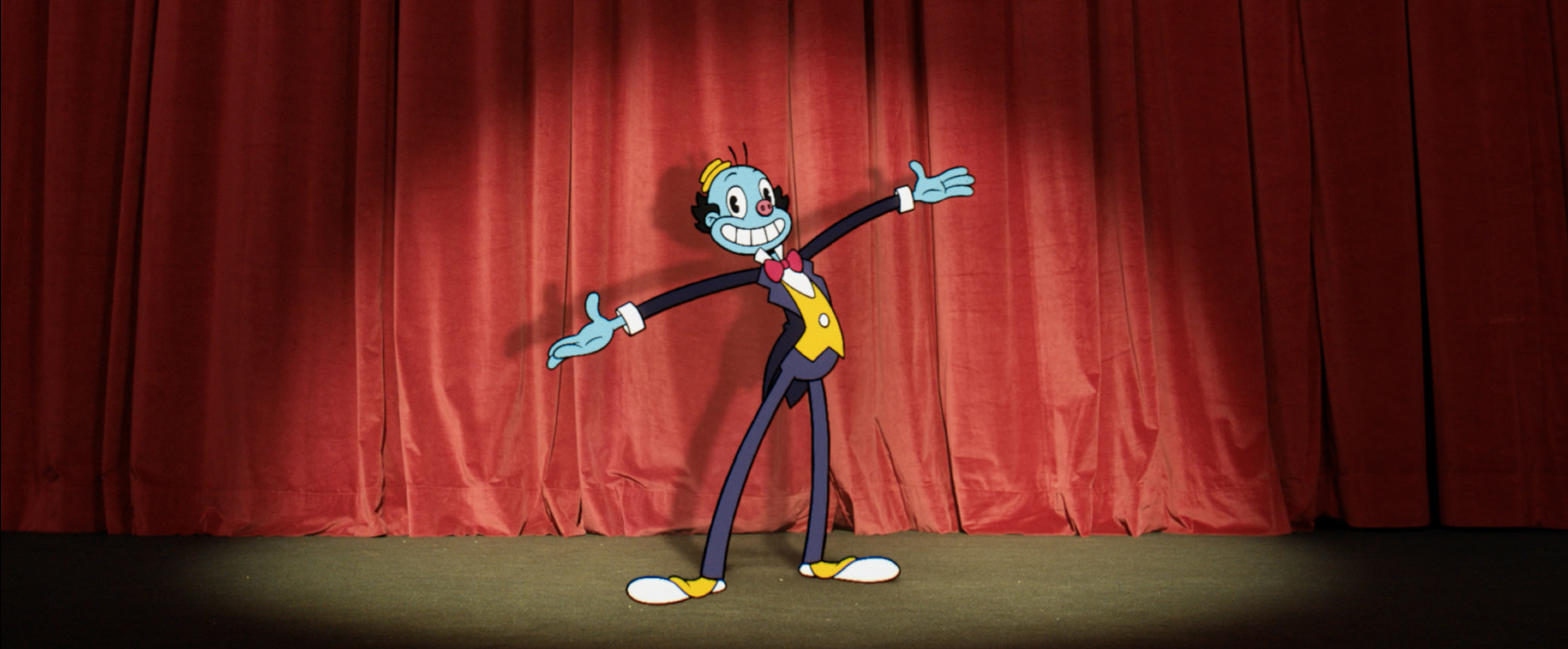
Doctor Who Season 2
Led by Emmy-winning Creative Director Ian Spendloff and VFX Supervisor Ross Wilkinson, Framestore designed and animated Mr. Ring-A-Ding for Doctor Who Season 2: Lux, supported with visualisation by Framestore Preproduction Services (FPS).
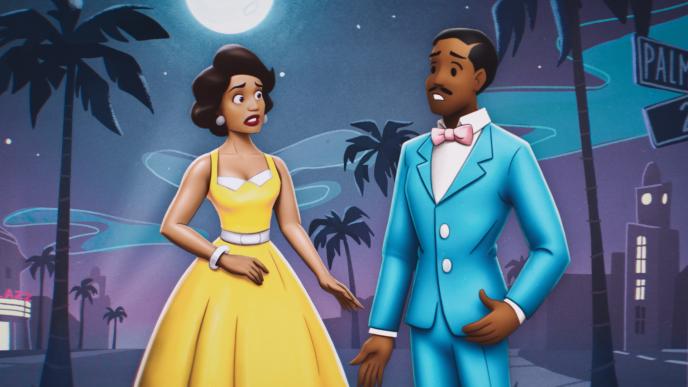
This episode is the most extraordinary piece of work. Not just Mr Ring-a-Ding, but all the visuals, Miami, the frames jumping, the killer reels… but my God, yes, really, first and foremost, Mr Ring-a-Ding himself. I never dared to dream he’d look so good. He is literally perfect, and it's very rarely you can say that. His design. His life! His hat!! His energy, his comedy, his darkness, his joy. There are plenty of live-action characters with only half of that!
Crafted entirely in the UK, the team took the character from initial concept, design and previs, through to final pixel. Mr. Ring-A-Ding evolves over the episode, starting as a classic 1930s hand-drawn, frame-by-frame animation and transforming into a gruesome and realistic modern 3D character, seamlessly integrated into live-action footage.
With 159 shots, the VFX for the character Mr Ring-A-Ding was completely unique to the series, and unique to VFX work across the current episodic landscape.
The episode seamlessly blends modern CG visual effects with traditional hand-drawn 2D animation, creating a storytelling experience that is both integral to the episode and unmatched in complexity across the entire series.
“The result is a piece of work that is highly specialised and truly unique,” said Ian Spendloff. “From script to concept and final shot production, the goal was to immerse the viewer into a believable story centred around a 2D animated character coming out of a cinema screen and existing in a 3D space, eventually developing into a very real, and grotesque, 3D being.”
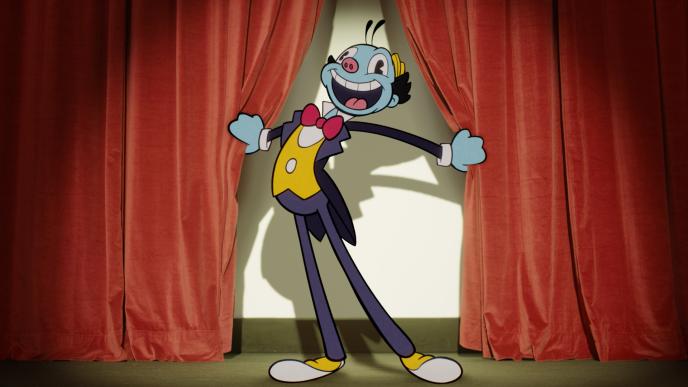

Nostalgic Character Design and Hand-Drawn Craftsmanship
Mr Ring-A-Ding was designed to fit in the world of 1930s era Disney and Fleischer cartoons, not only in look, but in the way he animated as he moved around the screen. His movement mirrors the rubber-hose limbs and bouncy charm of the time, but he also had to have a glint of naughtiness in his actions as a hint to what was to come. True to style, he was hand drawn frame-by-frame, by a team of traditional animators in over 60 shots.
“We brought in 2D animators that weren't part of Framestore specifically for this project – artists with credits on iconic works like Who Framed Roger Rabbit, The Simpsons and The Snowman.” said Ian Spendloff.
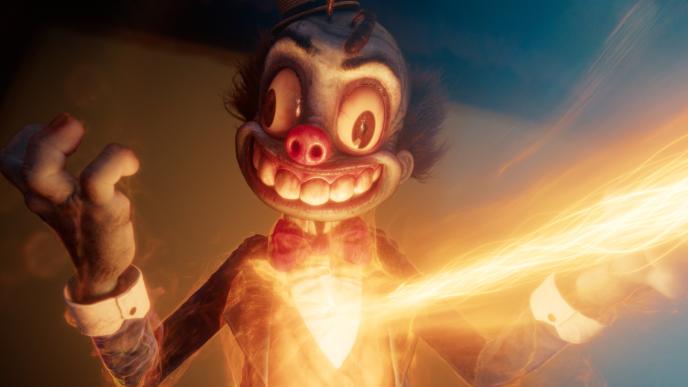
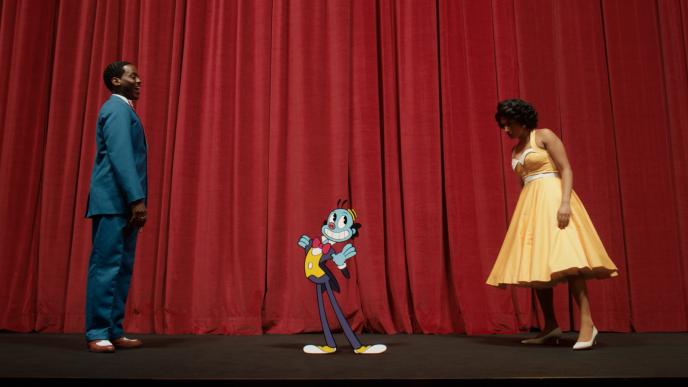
2D Meets 3D: Technical Collaboration
The 2D and 3D teams had to work closely together to carefully lay out where and how our 2D character would interact with his 3D space, allowing him to work with moving cameras and provide an interactive light and shadow.
“Not only was the style of 2D animation based on 30s cartoons, but our comp team pulled from these references to add film grain, scratches, hue variance and light blooming which would occur in cartoons of the time,” said framestore's Executive Produce, Standish Millennas. “This craft is not common or widely used in the visual effects world today, especially not in high end TV, new workflows and systems needed to be built to integrate the traditional with the modern methodologies.”
We start to see the traditional animation and CG animation combine on screen when Mr Ring-A-Ding calls on his film projectors to spool out their film reels to attack and restrain the Doctor.
“Practically, the Doctor had film reels tied around his wrists only, we were able to match them perfectly in CG so that they seamlessly appeared to be all from the same source, while animating them to have snake-like qualities in their action, giving them personalities despite being inanimate objects.” said Ross Wilkinson.
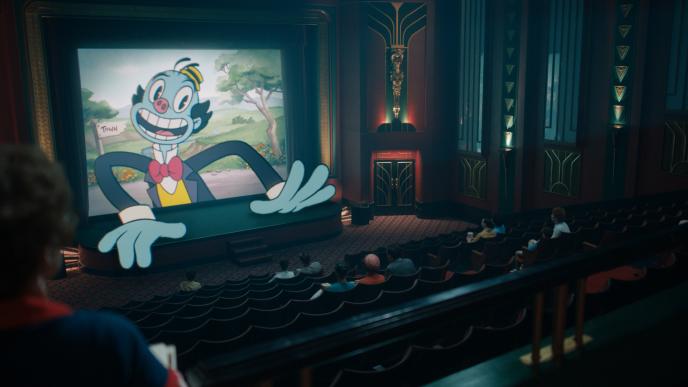
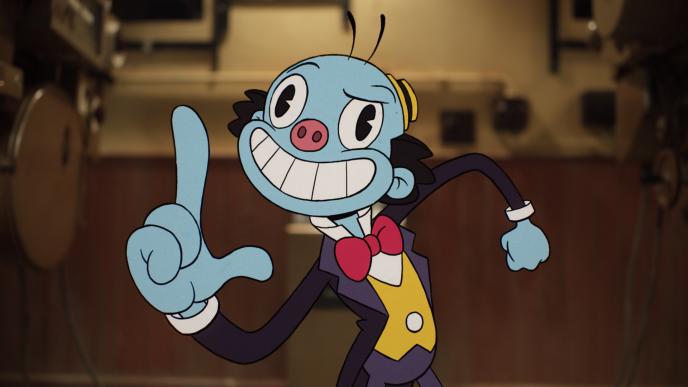
Evolving Through Animation Styles
As the episode progresses, Mr Ring-A-Ding’s 2D form interacts with FX ‘Regen Energy’ and he’s able to develop through time into different styles of animation, taking him through a 3D Pixar-style stage and into a more realistic version of his form with life-like hair, skin, and a grubby velvet suit.
Not only does Mr Ring-A-Ding find himself transitioning through styles of animation, but the Doctor and Belinda find themselves transformed into Scooby-Do style cartoons, and have to give themselves depth and complexity to escape.
“In the dialogue this comes in the form of exploring who they are as people but on screen our team shows this as the 2D animations gaining shading and highlights, giving them 3D dimensions in a 2D space.” said Ian Spendloff.
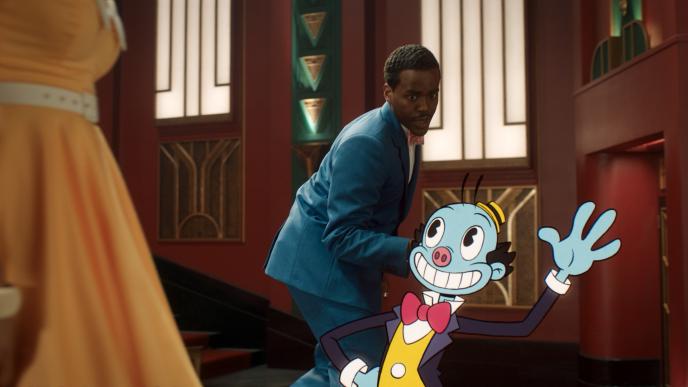
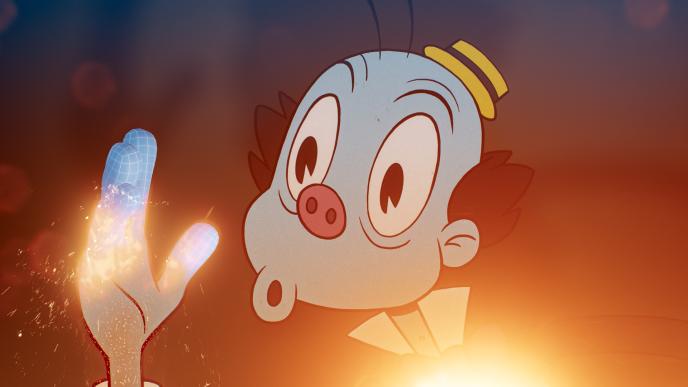
Breaking the Film Reel Reality
This scene ends with the Doctor and Belinda physically scrolling the film reel they exist in, faster and faster until it breaks and they can escape back into the real world as real people.
“This was a challenging concept to explore and took some testing time on set with how to shoot it, and then development time between our comp and design teams as to how to portray this breaking through between realities” said Ashlee Turner.
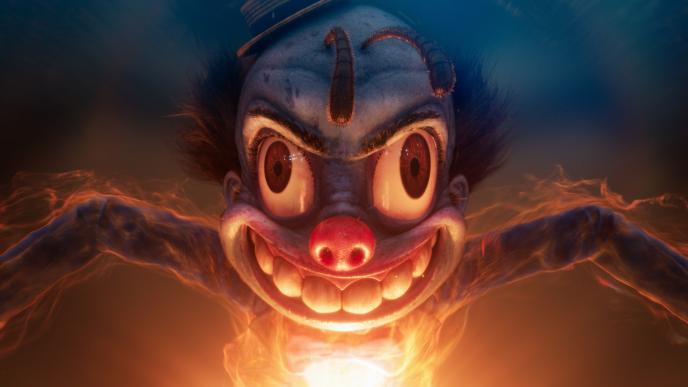

The Cinematic Environment
All this action is happening inside a cinema in 1950s Miami, shot on a rainy week in Cardiff. For the exterior shots, our teams referenced Miami from the era in their set extensions, populating the street with cars from that time and palm trees swaying in the breeze
Back in the cinema, film stock is set alight, creating an explosion that frees the doctor and releases Mr Ring-A-Ding into the outside world. On set, various elements of the explosion were captured on camera, with a body double, and our teams composited this together along with adding a DMP hole where the explosion had ripped through the building. Through this hole, Mr Ring-A-Ding is released, where he expands up and out of the earth’s atmosphere into infinity. The final shot of Mr Ring-A-Ding being a blend of 2D Mr Ring-A-Ding over a photo-real DMP galaxy.


A Love Letter to Animation
“We feel very much that the episode serves as a love letter to traditional hand drawn animation while embracing the most up to date skills and techniques from our 2D and 3D VFX teams,” said Standish Millennas. “Resulting in this high-quality combination of both visual eras, in what we hope will be a timeless episode in the history of Doctor Who.”
“As a lifelong Doctor Who fan, creating an original villain was both a dream and a big responsibility,” added Ian Spendloff.
You can catch the episode on BBC and Disney+.

